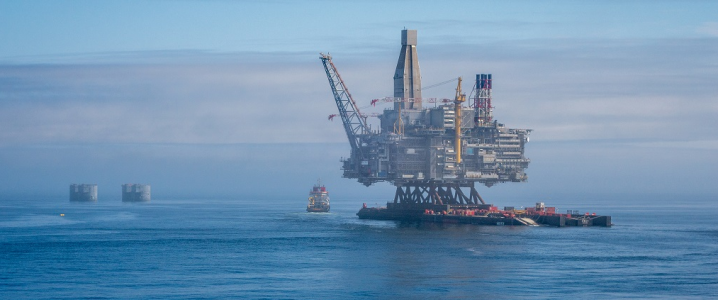Two of the biggest LNG projects in the world are due to start production this year, both offshore Australia: Japanese Inpex’s US$34-billion Ichthys development, and Shell’s US$14-billion Prelude FLNG project. The projects are adjacent to each other, and according to Wood Mackenzie analysts, the Ichthys and Prelude may actually draw gas from the very same reservoir—turning the two into rivals in what is now a race to see who can get to the LNG first.
According to one analyst, this winner of this race could have huge implications for the loser. “The difference between Prelude starting six months before versus six months after Ichthys could be a few percent of their reservoir stake. That is a material amount,” Wood Mac’s Saul Kavonic told Bloomberg.
For now, Ichthys is scheduled to begin production before Prelude, so LNG analysts and traders are keeping a close eye on developments. What makes the situation even more interesting, however, is that the two companies have taken different approaches to LNG extraction. Shell has built the biggest floating structure in the world, the Prelude FLNG facility, to save on pipeline transportation costs. Inpex, on the other hand, has approached production from a more traditional angle, building an almost 900-km pipeline to the coast and liquefaction trains.
Ichthys has an annual production capacity of 8.9 million tons. Prelude will pump some 3.6 million tons of gas, adding to Shell’s already operational Australian LNG capacity of 9.5 million tons annually. So, should the Anglo-Dutch company really worry about Inpex drawing gas from the same reservoir?
Well, despite Wood Mackenzie’s analysis, there is actually an agreement that the two projects actually do share the Brewster reservoir. Geoscience Australia, a government agency, says they do. Shell Australia’s chairman, Zoe Yujnovich, said a few months ago that “they are connected reservoirs.” Inpex’s Senior Managing Executive Officer, Masahiro Murayama, said in February that the Ichthys and the Prelude fields are not connected. So the jury is out.
This disagreement is interesting because whether or not the fields are part of the same reservoir would determine drilling schedules and locations, one oil and gas exploration consultant told Bloomberg. In other words, their connection or lack thereof is potentially significant, said John Davidson, because “Gas at the top of the Ichthys field may be in direct contact with Shell’s Prelude block.” This means that taking gas off the top of the Ichthys field may take gas away from Shell’s Prelude block. Related: Is Another Oil Price War Looming?
It’s worth noting that the two are in fact partners in the Prelude block, so Inpex is just as interested in that project doing well as Shell is. What’s more important is that the Brewster reservoir has enough gas for both. Ichthys alone has estimated reserves of 12 trillion cubic feet of gas and 500 million barrels of condensate—enough for 40 years of production. Prelude holds three trillion cubic feet of gas, also a rather impressive amount, with the field’s productive life estimated at 20-25 years. But here’s more: the two fields may be bigger than initially estimated, so there could be even more gas there than was originally thought.
So, Shell and Inpex don’t really have an axe to grind. They are partners in Prelude and their neighbors with regard to Ichthys and Prelude. They have worked together on a joint response system for spills. And there seems to be enough gas for both.
By Irina Slav for Oilprice.com
More Top Reads From Oilprice.com:
- EIA Stuns Oil Market With Huge Inventory Build
- Alberta Ready To Fight For Trans Mountain Oil Pipeline
- Chinese Oil Production Hits Record Low


















